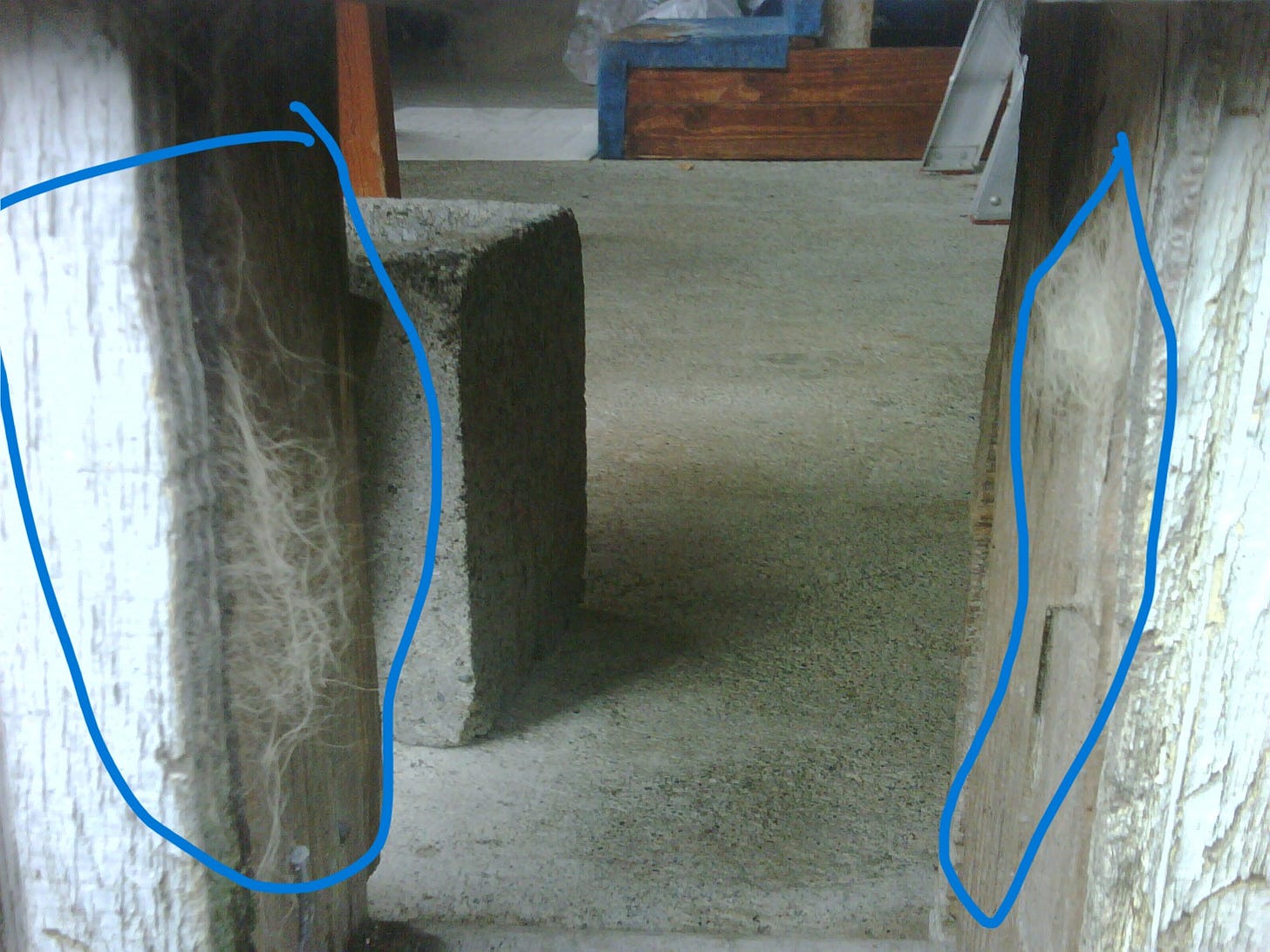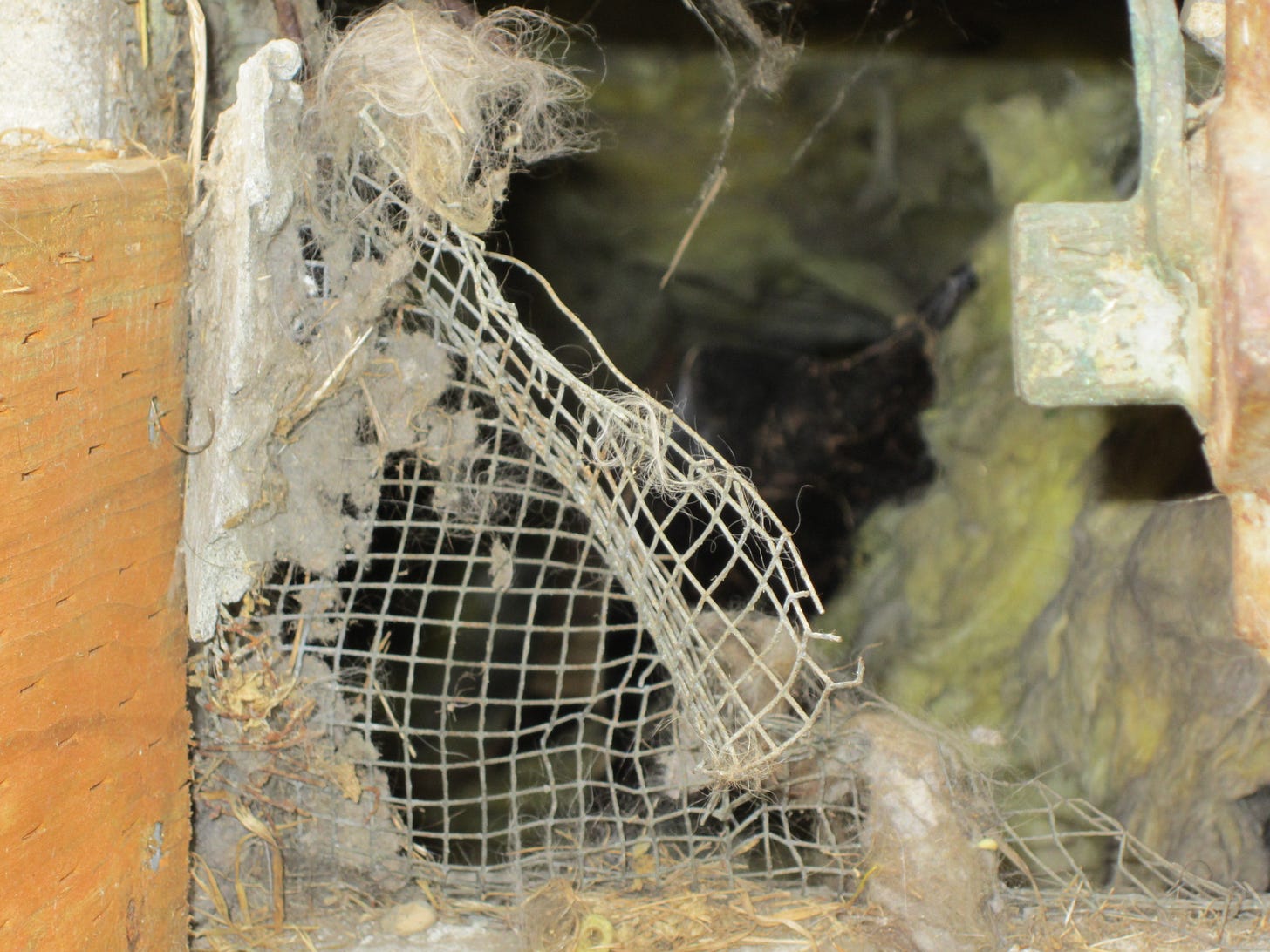NOTE FOR THE VISUALLY IMPAIRED: This story is also available as an audio recording, read by Kat, the author.
You are about to read a section from the middle of my memoir PET TRACKER. To read the FULL Substack (free!) version from the very start, go to this link, scroll down until you see the Scroll Down > icon-thingy and click on it. Then, scroll all of the way to the very bottom and you can start reading the beginning of the book with the “Dedication & Introduction.”
In showing other people how to handle my search dogs, I realized just how unconventional our training had been. First, volunteers had to learn about Rachel’s multipurpose nose. Given the correct commands, she was capable of searching in several different ways. She could conduct an area search for decomposition and pinpoint it with the alerts she had used in her cadaver searches. By simply saying, “Find the kitty,” Rachel would focus on scouring an area for any hidden cats. She could just as easily conduct an area search for any specific smell I presented to her—be it a lost cat, iguana, or ferret.
Rachel’s scent discrimination skills were nearly perfect, and since we had started searching primarily for lost pets—a job that Rachel loved—I knew I could trust her to stick to the scent she was assigned. Lastly, Rachel could follow a scent trail. She was far too dainty to be a bloodhound, and her nose was 100% Weimaraner, but she could trail nearly as well as A.J. with the right command.
The dedication of the volunteers kept me productive. As my body slowly began to give me more latitude in what I could do, their companionship and enthusiasm drove me to get out and push myself to work with my dogs again for cases, but only on flat terrain.
As I became even more immersed in pet detective work, it became clear that using a search dog to find lost pets was just the tip of the iceberg. Many pet owners believed that a bloodhound was the answer to locating their lost pet, but, as is the case in lost person searches, the search dogs are only one tool in an entire system used to find the missing. With this in mind, I began to experiment with additional law enforcement tactics and techniques to solve cases.
In every missing pet investigation, I looked for and began to occasionally find physical evidence. Some hair fibers caught in the jagged edges of an old wooden fence indicated the precise point where a dog escaped from his yard. Cobwebs in the opening of a pipe ruled it out as a potential search area for a missing cat. Rachel and I began to find things like tracks, scat, bones, and other evidence.
While my police training had taught me how to look for physical evidence, my training in search-and-rescue management techniques also came in handy in lost pet searches. Lost person search techniques include the use of trackers, high-tech equipment, search dogs, and the study of statistics, probabilities, and lost person behavior. A search manager determines which areas should be searched first based on the probable behavior of the missing person. This, of course, depends on the person—a hunter or hiker, a confused senior, and a frightened child will all behave differently when lost in the woods. Based on what we know about the person, we determine the “high probability areas” where these groups of missing people are most likely to be found.
The same kind of search probability theory could be applied to pet cases. In some cases, the logic was obvious, like when the mechanic from the auto shop told me point-blank that he knew his dog Sky would never cross a railroad trestle. In other cases, lost pet behavior was something I was still trying to sort out. Why did the injured cat dive under the neighbor’s porch and stay there, while the injured husky took off and wandered for miles? And why did a greyhound, a breed capable of running at speeds of 35 miles per hour, travel only four blocks when it was lost for two days? I wasn’t sure, but I was determined to find out!
In my lost pet searches, I also began to discover what I call “high probability evidence”—signs that indicated a strong likelihood that a missing pet was in a particular location. I first noticed an example of this evidence in my own backyard a few years earlier. I had discovered a stick with a distinctive mustache-shaped arrangement of cat hair hanging from the underside. It was blocking a hole under my neighbor’s deck, a favorite hiding place for my cat Yogi.

In order to get under the deck, Yogi had to rub against the stick every morning, day after day, as she passed under it. I discovered that this accumulation of cat hair fibers is physical evidence that can indicate a cat spends extensive time in a particular area. If Yogi ever disappeared, that deck would be one of the first places I would search.



I approached each lost pet search trying to find the same kind of information that had helped me locate missing persons. Years later, when I was asked in an interview about the origins of my lost pet recovery program, I explained that just like veterinary medicine mirrors the medical treatment for humans, the concept of missing animal response (MAR) work simply mirrors how we search for missing people.
There is a science to finding lost people. It’s called “SAR” (“search-and-rescue”) and is well established worldwide. I don’t know how long it will take for “MAR” work to be well established worldwide, especially in the training and certification of MAR search dogs. There are plenty of opportunities for the training, certification, and utilization of SAR K9’s, but I have yet to find any organized SAR K9 or Police Bloodhound certifying bodies show the willingness to test or certify the MAR search dogs trained through my program.
Pioneering new ideas into existence is not easy takes time. I just wish that others shared the vision that I’ve carried since 1997—that all communities across North America should have access to affordable K9 tracking services by lost pet tracking search dogs that’ve been properly trained (and certified) in this unique line of work.
After all of these years, I’m still chasing after that dream…





Thanks for sharing this via audio. I enjoyed listening while on my walk😀. My GSD is trained in live and cadaver but I’ve also had her find people’s lost keys.
If I wasn’t a full time nurse, I’d probably branch out for lost pet services as well.